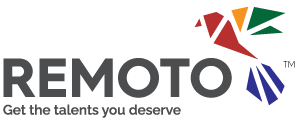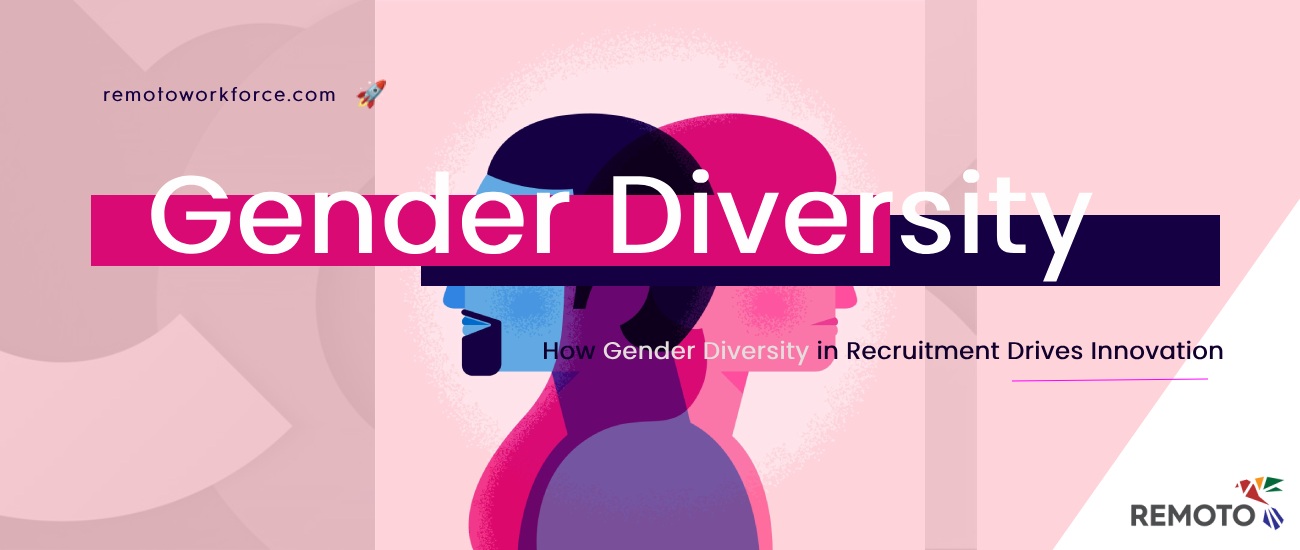Innovation is the heartbeat of every successful business. It propels companies forward, pushing boundaries, discovering new opportunities, and providing solutions to complex problems.
However, innovation doesn’t happen in a vacuum. It thrives in environments that are rich in diverse perspectives, where creativity flourishes, and where every voice is heard. Gender diversity is a powerful force driving this innovation, especially when companies prioritize it during recruitment.
In this post, we will look at how changing the way you recruit can help your business be more creative, grow, and succeed.
The Untapped Potential of Gender Diversity in Recruitment
Gender diversity has been a topic of conversation in boardrooms and HR departments for years.
But let’s be honest—how far have we come? The World Economic Forum’s Global Gender Gap study estimates that it will take 170 years to achieve gender equality in the global workforce. This statistic alone should be enough to make any forward-thinking company realize that more must be done—and fast.
It’s not just about meeting quotas or checking boxes. Gender diversity is about creating an inclusive workforce that embraces different perspectives and ideas. When women bring their unique insights, experiences, and skills to the table, they help businesses approach challenges from angles that might otherwise be missed.
Take a moment to think about the leaders shaping industries today. Ngozi Okonjo-Iweala, the first woman and first African to head the World Trade Organization, and Jane Fraser, the first female CEO of Citigroup, have shown the world that when women break barriers, they don’t just participate—they lead with transformative results.
By hiring more women, companies can use this potential and create new ideas that make businesses successful.
Why Gender Diversity and Innovation Go Hand in Hand
Let’s talk about why gender diversity is so closely tied to innovation. It’s simple: diverse perspectives lead to diverse solutions. When you have a team of people from different genders, backgrounds, and experiences, you get a variety of viewpoints, which opens the door to more creative problem-solving. This is crucial for innovation.
The PwC’s 2017 Global CEO Survey, for example, revealed that CEOs now prioritize problem-solving, adaptability, collaboration, and emotional intelligence as essential skills for their organizations.
These traits, often associated with women, reflect a shift in what’s needed to tackle today’s business challenges. We’ve changed from traditional male traits like being strong and controlling to more understanding, teamwork-oriented approaches. These approaches help create new ideas.
But let’s be clear—this is not about saying men don’t have these qualities. The reality is that different teams, especially those that include women, naturally harness a broader range of these key skills.
This is why companies that focus on gender diversity are more adaptable, more creative, and more equipped to thrive in the face of disruption. Innovation, after all, is about looking at the same problem everyone else sees and finding a solution no one else has thought of. Gender-diverse teams are uniquely suited to do just that.
Overcoming Barriers: What’s Holding Us Back?
Now, if gender diversity in recruitment is such a powerful driver of innovation, why aren’t we seeing more of it? Unfortunately, barriers to gender diversity persist. From unconscious bias to structural inequalities, the challenges women face in the workplace begin long before they ever walk through the door. These barriers are not just frustrating—they’re costly.
One significant barrier is the issue of unconscious bias during the recruitment process. Many hiring managers unintentionally favor male candidates, especially in industries traditionally dominated by men, such as technology, construction, and finance.
Bias can show up in subtle ways, like the language used in job descriptions, or in more direct ways, like the way interview questions are framed. Even when female candidates are equally qualified—or even more so—they may be overlooked because of these biases.
Practical Recruiting Strategies to Break the Gender Barrier
While these challenges are daunting, the good news is that there are practical, actionable strategies to overcome them. Improving gender diversity in recruitment starts with intention and commitment from leadership and hiring teams. Let’s explore three key strategies that can make a real difference.
Create Diverse Interview Panels
One of the most effective ways to counter unconscious bias is to introduce diverse interview panels. This means including a mix of genders, ethnicities, and backgrounds in the recruitment process. By doing so, you ensure that candidates are evaluated from multiple perspectives, leading to fairer and more balanced hiring decisions.
Diverse interview panels also project a positive image of your company. Candidates who see a diversity of people in leadership positions are more likely to feel that your company values inclusion and offers equal opportunities. If they land the job, this perception can enhance your employer’s brand and make it easier to attract top female talent in the future.
Assessment centers are another tool some companies use to diversify their hiring process.
For example, having leaders from different departments assess a candidate for a senior role can provide a broader understanding of the candidate’s strengths and weaknesses. It ensures that the hiring decision isn’t based on the opinion of one person but on a well-rounded evaluation from a diverse team.
Provide Training on Inclusive Hiring Practices
Unconscious bias is just that—unconscious. It’s not something most people do intentionally, but it can still have a profound impact on hiring outcomes. To address this, companies need to provide training for all personnel involved in recruitment. This includes recruiters, hiring managers, and even C-suite executives.
Training should cover everything from writing inclusive job descriptions to conducting structured interviews that focus on skills and qualifications rather than gender or personal background. Companies should also use clear, proven rules for evaluating candidates so hiring decisions are based on merit, not bias.
By teaching your team how to recognize and stop bias, you make hiring more inclusive. This will make sure that female candidates aren’t unfairly ignored.
Use Gender-Inclusive Language in Job Descriptions
Words matter, especially when it comes to job descriptions. Certain words, like “dominant” or “competitive,” can discourage women from applying for roles because they are seen as masculine traits. On the other hand, words like “collaborate” or “support” are viewed as more inclusive and tend to attract more female candidates.
To create gender-inclusive job descriptions, companies should focus on using neutral language that appeals to everyone.
Another powerful tool is to include a statement about your company’s commitment to diversity and inclusion. Let candidates know that your organization values equal opportunity and that you’re actively working to create a gender-inclusive workplace. This simple addition can go a long way in attracting more female talent.
The Long-Term Benefits of Gender-Inclusive Recruitment
When companies commit to breaking down gender barriers in recruitment, the benefits extend far beyond just hiring more women. A gender-diverse workforce leads to improved decision-making, increased innovation, and better business outcomes.
But it’s not just about the bottom line. Gender diversity creates a more inclusive and supportive work environment for all employees, leading to higher job satisfaction, greater retention, and a stronger company culture. Employees who feel valued and respected are more likely to stay with a company long-term, reducing turnover and the costs associated with constantly recruiting and training new hires.
Moreover, gender diversity at the leadership level is essential for inspiring the next generation of female talent. When women see other women in senior roles, they are more likely to feel motivated to pursue leadership opportunities themselves. This creates a positive cycle of empowerment and growth that benefits both the individual and the organization.
Gender Diversity Is the Key to Innovation
In the end, it’s clear: gender diversity is not just a nice-to-have—it’s a must-have for companies that want to stay competitive. By breaking down barriers in recruitment and creating an inclusive hiring process, businesses can tap into the vast potential that women bring to the table.
The world is full of talented, ambitious women ready to make a difference in their industries. It’s up to us as business leaders, recruiters, and HR professionals to create the opportunities they need to thrive. By doing so, we unlock not only their potential but also the potential of our companies to innovate, grow, and succeed.














